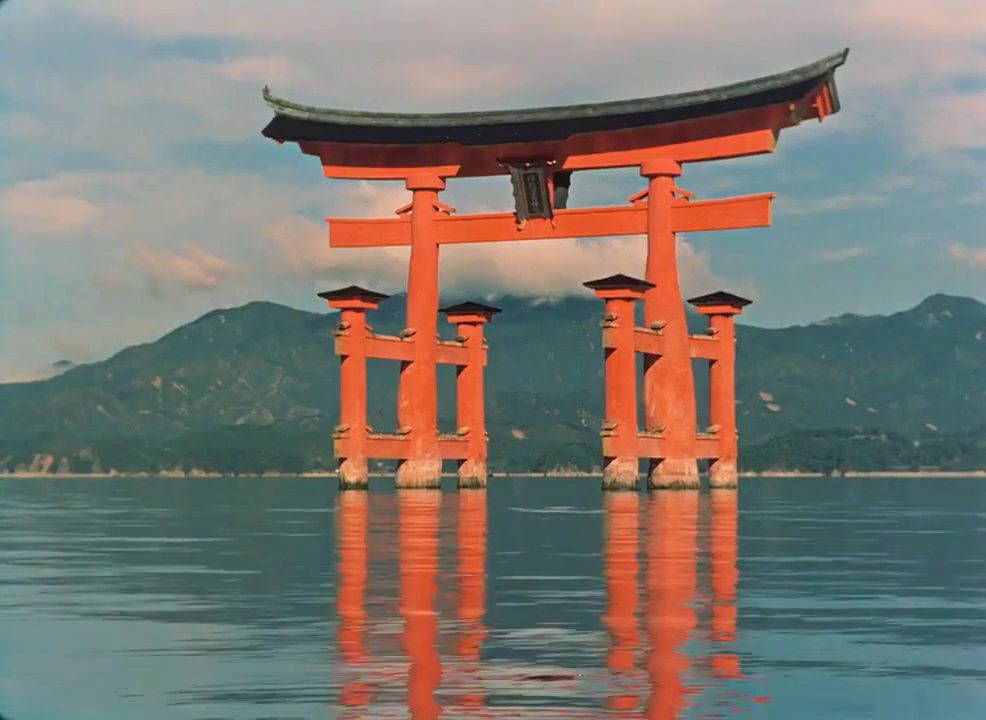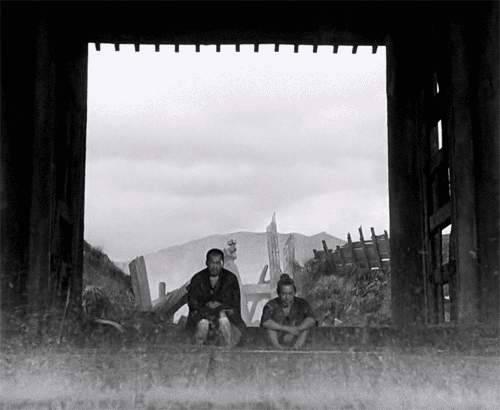妖怪百物語 [Yōkai hyakumonogatari / Yokai Monsters: 100 Monsters] (Kimiyoshi Yasuda, 1968)
Oct
4

One-hundred monsters! (via). DPs: Yasukazu Takemura & Shōzō Tanaka.
[A favourite] horror movie with more than one bad guy*
A shrine must give way to a brothel, and a game of supernatural storytelling follows. At the end of the spooky tales, the landowner neglects to complete the all-important purification ceremony resulting in one-hundred yōkai – one for each story – coming out to haunt the rich man and his cronies.
* the Bales 2025 Film Challenge for October is horror-themed as opposed to date-based, and is all about favourites. Expect non-horror and films I believe to be relevant instead.
samurai
“Today is the first day of a life of sacrifice.” 地獄門 [Jigokumon / Gate of Hell] (Teinosuke Kinugasa, 1953)
Aug
4
orange

The shrine's torii as seen in the film. Vermilion contains mercury, which not only acts as a preservative but is also believed to ward off evil. DP: Kōhei Sugiyama.
Orange: a building or structure*
– Moritoo Endō
Partially filmed near the 厳島神社 (Itsukushima Shrine) with its striking vermilion torii.
Shot on Eastmancolor, relatively cheap and globally available, and influenced by Hollywood colour melodramas of the time, in particularly Rudolph Maté's Mississippi Gambler (1953) (source), and in its turn greatly influenced the implementation of colour in global cinema to come.
Jigokumon won two Academy Awards in 1955, for Best Costume Design and Best Foreign Language Film.
* the Bales 2025 Film Challenge for August is not date-related but lists, for the most part, the colours of the rainbow.
憂國 [Yūkoku / Patriotism or the Rite of Love and Death] (Yukio Mishima, 1966)
May
1
Loyalty Day

Shinji Takeyama (Yukio Mishima) and Reiko (Yoshiko Tsuruoka). In a quiet framed still, Shinji lays on a tatami mat in full uniform. Reiko rests her head on his chest. Both have their eyes closed. DP: Kimio Watanabe.
Japanese author Yukio Mishima was, besides an aesthete, a fierce proponent of Japanese nationalism. In 憂國, based on his short 1960 story, Mishima plays palace guard Lt. Shinji Takeyama. Despite being one of the instigators of an ultra-nationalist coup, Takeyama decides he cannot overthrow the government as it would mean having to kill his friends and be disloyal to the Emperor. Returning home, he and his bride Reiko (Yoshiko Tsuruoka) perform #切腹 (#seppuku / #HaraKiri), as in line with Takeyama's #samurai heritage.
Yūkoku is a #SilentFilm that plays out like #Noh #theatre, with an extreme emphasis on the beauty and love of death and loyalty respectively.
After Mishima's own seppuku in 1970, his widow ordered all copies of Yūkoku to be destroyed. In 2005, in Mishima's house, a pristine copy was uncovered in a tea box.
“It sounded interesting, at least while I kept out of the rain. But if it's a sermon, I'd sooner listen to the rain.”羅生門 [Rashōmon] (Akira Kurosawa, 1950)
Apr
22
April Showers Day

Two men sheltering from torrential rain in the gate of a wooden temple. DP: Kazuo Miyagawa.
– commoner